By: Mel Schwarz, Director of Legislative Affairs, Eide Bailly
In today’s business landscape, sustainability is not just a buzzword; it’s a crucial aspect of responsible governance. The federal government’s commitment to incentivizing sustainable practices presents an opportunity for both environmental stewardship and financial benefit.
BOOSTING ENERGY EFFICIENCY INCENTIVES
The tax savings from claiming business credits and incentives allow organizations to invest more back into their business. In fact, there is a potential of up to $2 trillion in energy incentives for applicable organizations in the next 10 years thanks to the Inflation Reduction Act. These are some of the valuable business tax incentives to benefit from:
TAX CREDITS FOR CARBON CAPTURE AND USAGE (SECTION 45Q)
A natural starting point for leveraging these incentives is through credits for carbon capture and sequestration in ethanol production. Unlike many other industries, the carbon dioxide resulting from ethanol production does not contain large amounts of impurities that must be stripped out before transportation or use. As a result, the cost of carbon capture from ethanol production is limited and may even be less than the federal credit.
ADVANCED ENERGY PROJECT CREDIT (SECTION 48C)
Businesses can layer additional credits and incentives to amplify federal sustainability benefits. For instance,
an existing facility that is re-equipped to reduce greenhouse gas emissions may qualify for a credit of up to 30% of the additional costs incurred, separate and apart from the carbon capture equipment itself. This tax credit may be available regardless of carbon capture so
long as facility emissions are reduced by 20%.
ENERGY-EFFICIENT BUILDING IMPROVEMENTS (SECTIONS 179D AND 45L)
Many taxpayers are benefiting from advancements in geothermal heat pumps that use underground piping for both heating and cooling. Through available energy efficiency incentives, up to 30% of this project may be paid for. Energy saving additions such as fiber optic lighting and electrochromic windows may also be credit eligible. Incentives also extend to building projects. Meeting energy efficiency standards can
unlock deductions of up to $5 per square foot providing an additional financial incentive for sustainable construction practices.
BENEFITS FOR TAX-EXEMPT ORGANIZATIONS
Typically, tax-exempt organizations do not benefit from tax credit incentives because they do not have a tax obligation to offset with the credit. However, the IRA allows exempt organizations to benefit from clean energy credits by receiving the equivalent credit amount as a direct payment. With direct pay (also known as elective pay), applicable entities can receive financial incentives by investing in eligible energy property or participating in eligible clean energy production activities.
Working alongside an experienced team of advisors will help you maximize these new opportunities. Eide Bailly is here to evaluate your eligibility and collaboratively optimize the full potential of these energy-efficient incentives.



